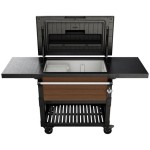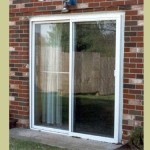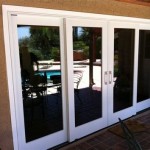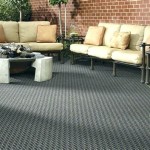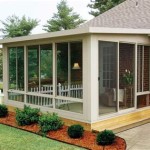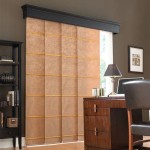Provide information only.
Selecting the Best Quality Sliding Patio Doors
Sliding patio doors represent a significant investment for homeowners, impacting energy efficiency, security, aesthetic appeal, and overall home value. Choosing the best quality option requires careful consideration of several factors, ranging from materials used in construction to the performance characteristics of the door in various weather conditions. This article provides an in-depth analysis of key aspects to consider when selecting sliding patio doors to ensure long-term satisfaction and optimal performance.
Material Composition and Frame Construction
The materials used in the frame and sash of a sliding patio door significantly influence its durability, insulation, and maintenance requirements. Common materials include vinyl, wood, aluminum, and fiberglass, each offering distinct advantages and disadvantages.
Vinyl is a popular choice due to its affordability, low maintenance requirements, and excellent insulation properties. Vinyl frames are resistant to rot, insect infestation, and weathering, making them a durable option for various climates. However, vinyl can be susceptible to expansion and contraction with temperature fluctuations, which may affect the door's seal and operation over time. The quality of the vinyl compound is crucial; higher-grade vinyl formulations offer improved stability and resistance to fading or discoloration.
Wood frames offer a classic aesthetic and excellent insulation. Wood is a natural insulator, providing superior thermal performance compared to aluminum. However, wood requires regular maintenance, including painting or staining, to prevent rot, warping, and insect damage. The type of wood used also impacts durability; hardwoods like oak and mahogany are more resistant to decay than softwoods like pine. Wood frames can also be clad with aluminum or vinyl on the exterior to provide added protection from the elements and reduce maintenance needs.
Aluminum frames are known for their strength and durability. Aluminum is resistant to corrosion and can withstand harsh weather conditions. However, aluminum is a poor insulator, making it less energy-efficient than vinyl or wood. Thermally broken aluminum frames incorporate a non-conductive material between the interior and exterior surfaces to reduce heat transfer, improving energy efficiency. Aluminum frames are often used in regions with high wind loads or coastal environments where corrosion resistance is essential.
Fiberglass frames offer a combination of strength, durability, and energy efficiency. Fiberglass is resistant to warping, cracking, and rot, and it has excellent insulation properties. Fiberglass frames can also be painted or stained to match the home's aesthetic. While fiberglass is generally more expensive than vinyl or aluminum, its long-term performance and low maintenance requirements make it a worthwhile investment for many homeowners. The manufacturing process for fiberglass frames also significantly affects their quality, with pultruded fiberglass offering superior strength and dimensional stability.
Glass Options and Energy Efficiency
The type of glass used in a sliding patio door plays a crucial role in its energy efficiency, security, and noise reduction. Several glass options are available, each with different performance characteristics.
Double-pane glass is the standard for most modern sliding patio doors. Double-pane glass consists of two panes of glass separated by an air or gas-filled space. This construction improves insulation by reducing heat transfer between the interior and exterior. The space between the panes is often filled with an inert gas, such as argon or krypton, which further enhances insulation by reducing convective heat transfer. Low-E (low-emissivity) coatings are often applied to one or both panes of glass to reduce radiant heat transfer. Low-E coatings reflect infrared light, keeping heat inside during the winter and outside during the summer. The specific type of Low-E coating can be tailored to the climate, with different coatings optimized for heating-dominated or cooling-dominated regions.
Triple-pane glass offers even greater energy efficiency compared to double-pane glass. Triple-pane glass consists of three panes of glass separated by two air or gas-filled spaces. This construction provides superior insulation, reducing heat transfer and noise transmission. While triple-pane glass is more expensive than double-pane glass, it can significantly reduce energy bills in extreme climates.
Impact-resistant glass is designed to withstand high winds and flying debris. Impact-resistant glass consists of two panes of glass laminated to a layer of polyvinyl butyral (PVB). The PVB interlayer holds the glass together even when it is broken, preventing shards of glass from flying around during a storm. Impact-resistant glass is commonly used in coastal regions prone to hurricanes and other severe weather events.
Tempered glass is heat-treated to make it stronger and more resistant to breakage. If tempered glass does break, it shatters into small, relatively harmless pieces, reducing the risk of injury. Tempered glass is required for safety in many building codes, particularly for large glass panels near doorways or walkways.
Tinted glass reduces glare and heat gain. Tinted glass is available in various colors and shades, allowing homeowners to customize the amount of light and heat that enters their home. Tinted glass can also provide privacy by making it more difficult to see inside the home from the outside.
The energy efficiency of glass is measured by several ratings, including the U-factor, Solar Heat Gain Coefficient (SHGC), and Visible Transmittance (VT). The U-factor measures the rate of heat transfer through the glass, with lower U-factors indicating better insulation. The SHGC measures the fraction of solar radiation that enters the home through the glass, with lower SHGC values indicating less heat gain. The VT measures the amount of visible light that passes through the glass, with higher VT values indicating more natural light. Homeowners should consider these ratings when selecting glass to ensure optimal energy efficiency for their climate and home orientation.
Security Features and Hardware
The security of a sliding patio door is a critical consideration for homeowners. Several security features can enhance the protection against forced entry. The quality of the locking mechanism is paramount. Multi-point locking systems engage several points along the door frame, providing a stronger and more secure seal than single-point locks. These systems often include hooks or bolts that interlock with the frame, making it more difficult to force the door open. The locking hardware should be made of durable materials, such as stainless steel or brass, to resist corrosion and wear.
Reinforced frames and sashes are designed to withstand greater force. Reinforced frames typically incorporate metal or composite materials to increase their strength and rigidity. The glass itself can also be reinforced with a security film or laminated construction to make it more difficult to break. Security films are applied to the interior surface of the glass, creating a barrier that holds the glass together even when it is shattered.
Anti-lift devices prevent the door from being lifted off its track. These devices typically consist of pins or brackets that secure the door to the frame, making it more difficult to remove. Security bars can also be installed to provide an additional layer of protection against forced entry. These bars are typically made of steel and can be adjusted to fit the width of the door opening.
High-quality rollers and tracks ensure smooth and reliable operation. The rollers should be made of durable materials, such as stainless steel or nylon, and should be designed to glide smoothly along the track. The track should be made of a strong and corrosion-resistant material, such as aluminum or stainless steel. Regular maintenance, including cleaning and lubrication, can help to keep the rollers and tracks in good working condition.
Consider incorporating smart home technology, such as door sensors and alarms. These devices can provide real-time alerts if the door is opened or tampered with, allowing homeowners to respond quickly to potential security threats. Some smart home systems can also integrate with other security devices, such as cameras and motion detectors, to provide a comprehensive security solution.
The handle and latch mechanism should be robust and easy to operate. The handle should be ergonomically designed for comfortable grip and should be made of a durable material that can withstand repeated use. The latch mechanism should engage securely and smoothly, providing a positive locking action. Consider models with a foot-operated secondary lock, providing added security without the need for manual locking.
Installing a visible security system, such as a security camera or alarm system, can deter potential intruders. A prominently displayed security sign can also serve as a deterrent. Ensure that the door frame is securely attached to the wall studs, which provides a stronger resistance against forced entry. Reinforce the strike plate with longer screws that penetrate deeper into the wall stud. Consider adding a secondary security device, such as a patio door security bar, to provide additional protection.

How To Find The Best Sliding Glass Doors Milgard

Best Patio Doors For Busy Areas

Best Patio Doors For Your Home The

Best Patio Doors For Your Home The

5 Of The Best Patio Doors For 2024 Milgard

Which Type Of Patio Door Is Best For Your Home Pella

Vinyl Vs Fiberglass Patio Doors 6 Benefits Of Sliding

Ultimate Sliding Patio Doors Marvin

250 Series Vinyl Patio Doors Pella

Contemporary Sliding Doors Renewal By Andersen

